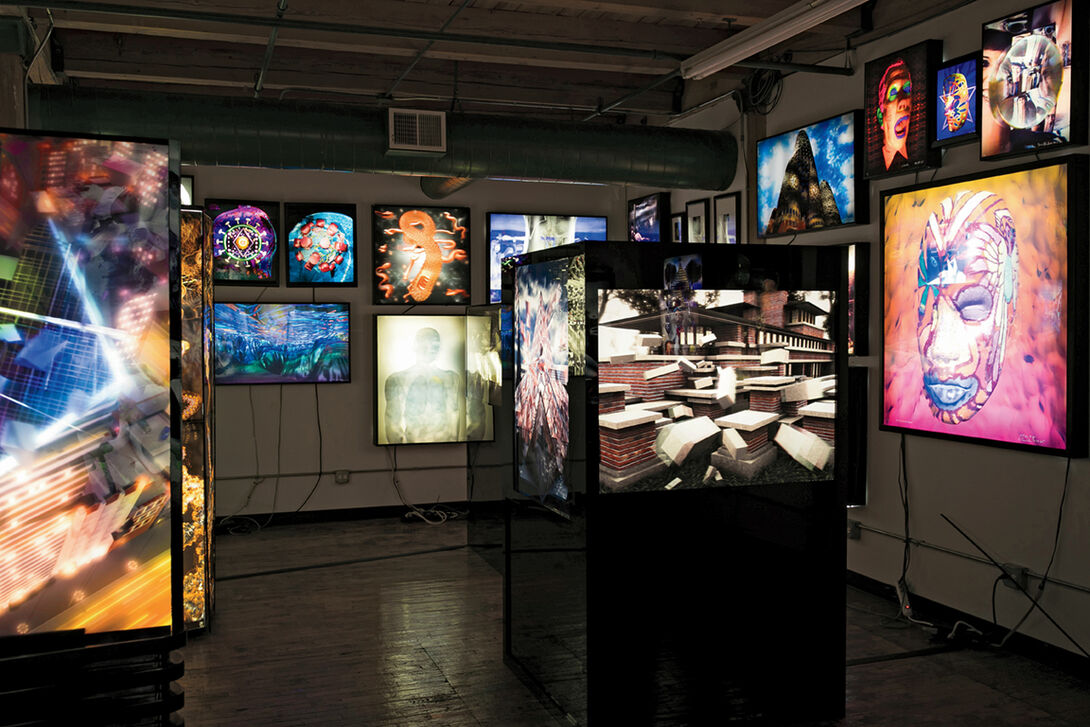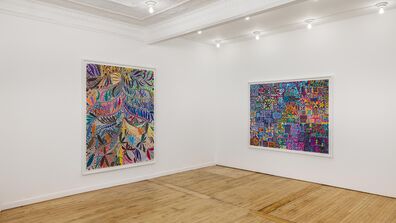
The Process
Ellen Sandor (MFA 1975, HON 2014) on Her Process
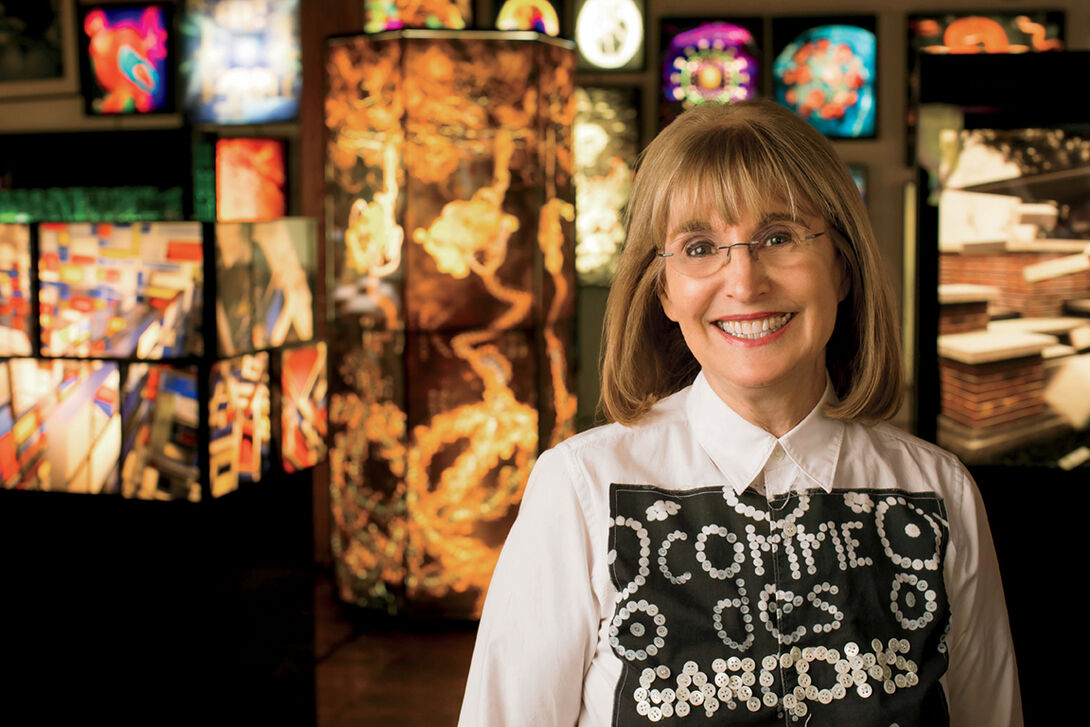
Artist and SAIC alum Ellen Sandor (MFA 1975, HON 2014) recently finished a yearlong residency at Fermilab particle physics and accelerator laboratory in Batavia, Illinois, that culminated with an exhibition featuring 21 of her PHSColograms (pronounced skol-o-gram), PHSCologram sculptures, and a virtual reality experience that brings participants inside the lab’s particle accelerator to witness an artist’s interpretation of neutrinos colliding. We caught up with Sandor in her West Loop studio, (art)n Laboratory, Inc., with her collaborators Diana Torres (BFA 2010, MFA 2012) and Christopher Kemp to talk about the process behind their new media work.
Sandor coined the term “PHSCologram” in 1983 to describe her computer-generated, 3D, digital, backlit photographs that combine elements of photography, holography, and sculpture. The PHSColograms for the Fermilab exhibition began with an intensive research phase in which the team collaborated with scientists to understand the science behind the lab’s work with neutrinos: microscopic, massless particles that travel near light speed. Getting the science “100 percent correct and juxtaposing it with exciting metaphors is essential,” says Sandor.
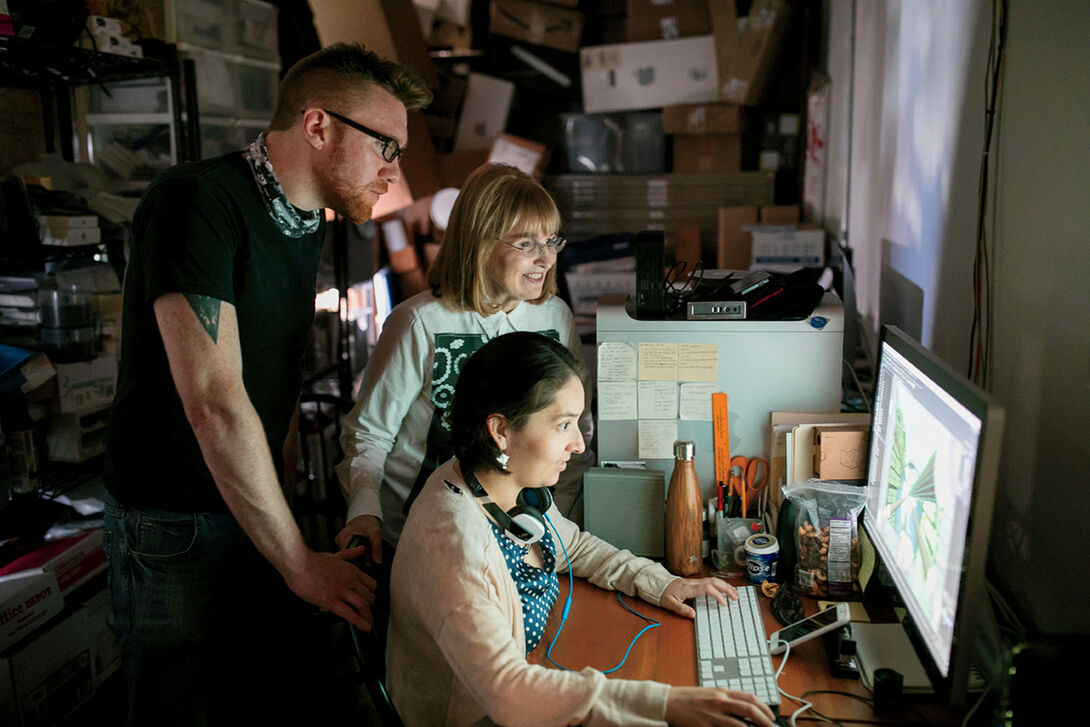
The entire team traded images and ideas with Fermilab scientists during weekly Skype calls. Under Sandor’s direction, Torres built the images in Maya 3D modeling software and updated them following each new insight.
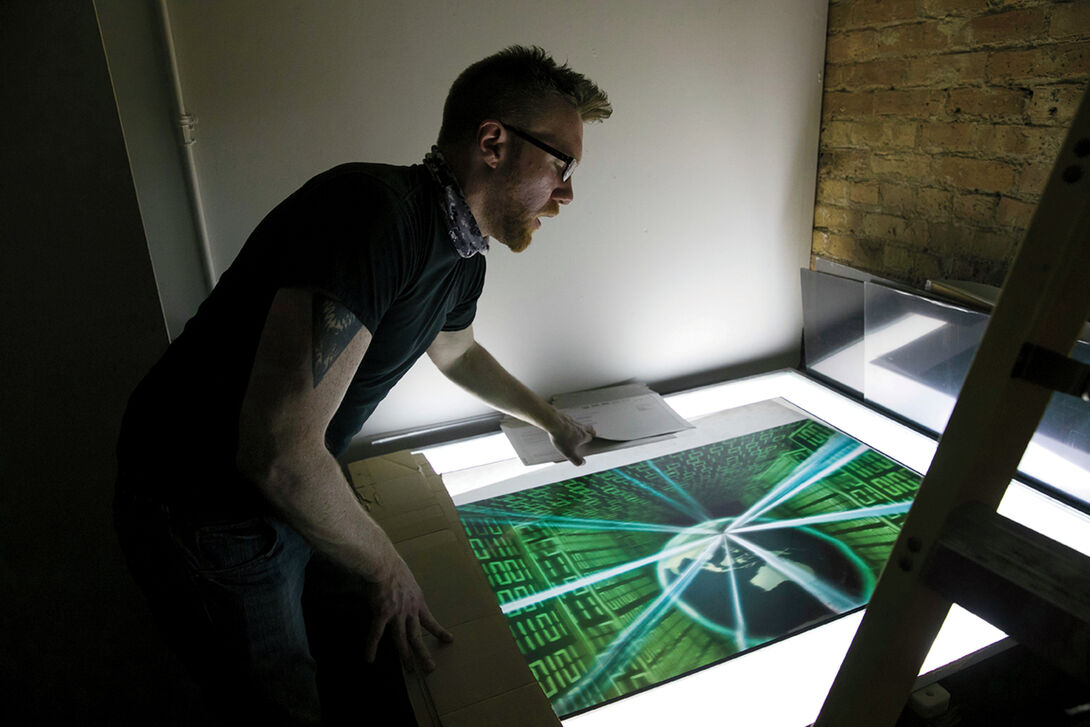
When the images were complete, Kemp used a proprietary software developed by (art)n to combine Torres’ images into a single piece. The software takes 64 frames and slices them into vertical strips.
“Essentially, we are lining up the closest points,” says Kemp. “Then we do the same with the furthest points.” Lining up the images is what gives the final image depth, which can be manipulated using (art)n’s software until it looks right. “That’s the art,” Sandor explains.
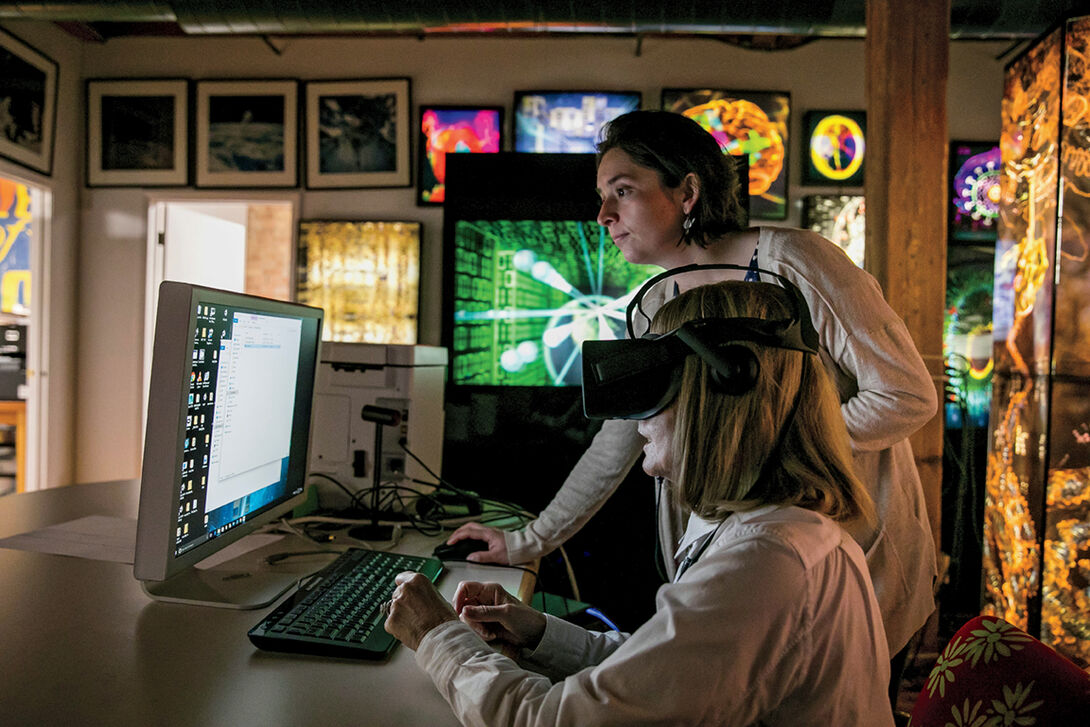
When each image was ready, Kemp printed it, set it on a light box, and laid a line screen over it. The line screen blocks out a majority of the 64 frames, “But allows you to see a couple at a time, depending on your angle,” says Kemp. “So, your right eye might see frame 37, and your left eye, frame 38. Your brain puts it together as a 3D image.” When the images looked right, they were sent off to be printed on film.
For the next work, the (art)n team is collaborating with scientists at the University of California, Berkeley, to visualize CRISPR, a gene editing tool that allows scientists to make precise changes in DNA. The idea for the work was given to Sandor by her 19-year-old autistic grandson who recently gained the ability to communicate. Sandor says he told her, “It’s going to be one of the hopes for my future.” Sandor, Torres, and Kemp are now working with the scientist who developed CRISPR. The new work, like the Fermilab exhibition about neutrinos, will use art to make complex science more accessible.
